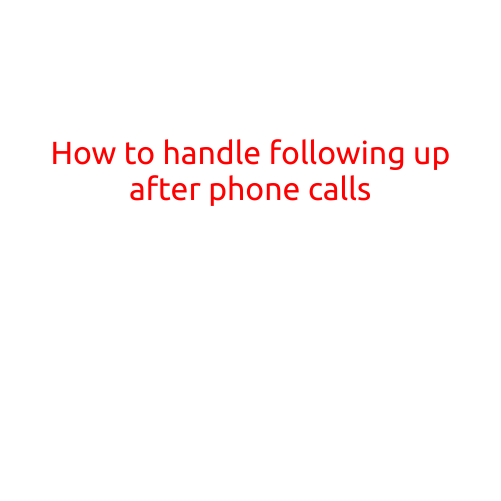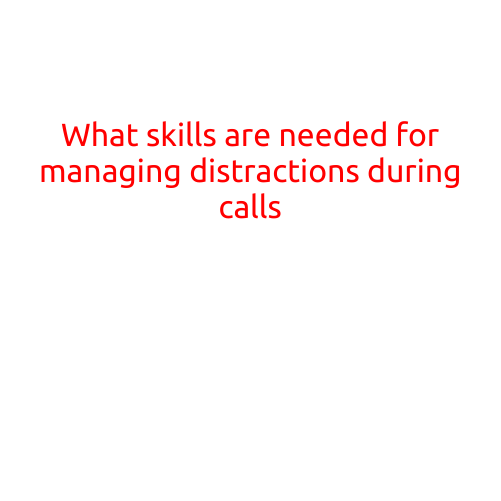
How to Handle Following Up After Phone Calls
Making a phone call is just the first step in effectively communicating with someone. After the call, it’s crucial to follow up and ensure that the person you spoke with takes the necessary actions or provides the requested information. In this article, we’ll explore the importance of follow-up and provide tips on how to handle it like a pro.
Why is Following Up Important?
Following up after a phone call is essential for several reasons:
- Clarify understanding: After a phone call, you may want to confirm the understanding of the discussion. Did you both agree on the same points? Did you cover all the necessary topics?
- Ensure action is taken: Sometimes, people may forget or put off taking action on a decision made during a phone call. A follow-up ensures that the person takes the necessary steps.
- Provide additional information: You may have promised to provide additional information or resources. Following up allows you to fulfill this promise and provide the necessary materials.
- Build trust and credibility: Consistently following up demonstrates your commitment to the conversation and builds trust with the person.
How to Handle Following Up After a Phone Call
Here are some tips to help you handle following up effectively:
- Schedule a specific follow-up date and time: Agree on a specific date and time to follow up, and make sure to add it to your calendar.
- Send a summary or recap email: After the call, send a brief summary of the discussion to confirm the understanding and key takeaways. This helps the other person reflect on the conversation and ensures everyone is on the same page.
- Use a follow-up template: Create a template for your follow-up emails, including the key points discussed during the call, any actions items, and the agreed-upon deadline for follow-up.
- Keep it concise and clear: Keep your follow-up emails brief and to the point. Avoid lengthy emails that may overwhelm the recipient.
- Include a clear call to action: Make sure to include a clear call to action in your follow-up email, such as “Please confirm receipt of this email” or “Please provide the required information by [date].”
- Use a friendly and professional tone: Always use a friendly and professional tone in your follow-up emails. Avoid coming across as pushy or aggressive.
- Follow up multiple times if necessary: If you don’t receive a response or the person doesn’t take the necessary action, don’t be afraid to follow up multiple times. However, be patient and don’t be too aggressive in your follow-up emails.
Best Practices for Follow-up
Here are some additional best practices to keep in mind:
- Set reminders: Set reminders for yourself to follow up on the agreed-upon date and time.
- Use a system for tracking follow-ups: Use a CRM or a spreadsheet to track your follow-ups and ensure you stay on top of them.
- Be flexible: Be flexible with your follow-up schedule. Sometimes, things may come up, and you may need to adjust your follow-up date and time.
- Keep a record of conversations: Keep a record of all your conversations, including phone calls and emails. This helps you track progress and stay organized.
In conclusion, following up after a phone call is a crucial step in effective communication. By using the tips and best practices outlined in this article, you can ensure that your follow-ups are efficient, effective, and helpful in achieving your goals. Remember to stay organized, concise, and professional in your follow-ups, and you’ll be well on your way to building strong relationships and achieving success in your personal and professional life.





